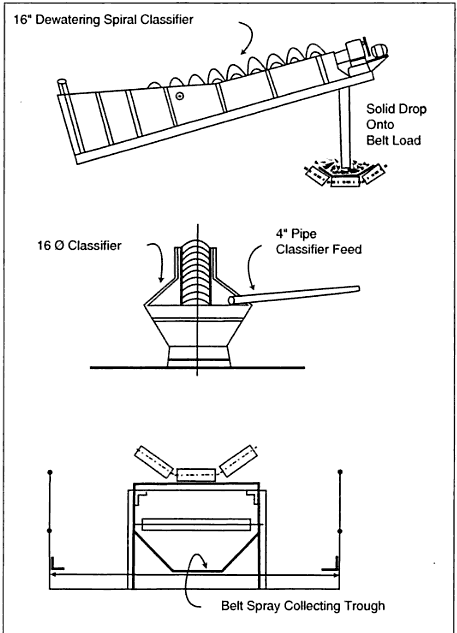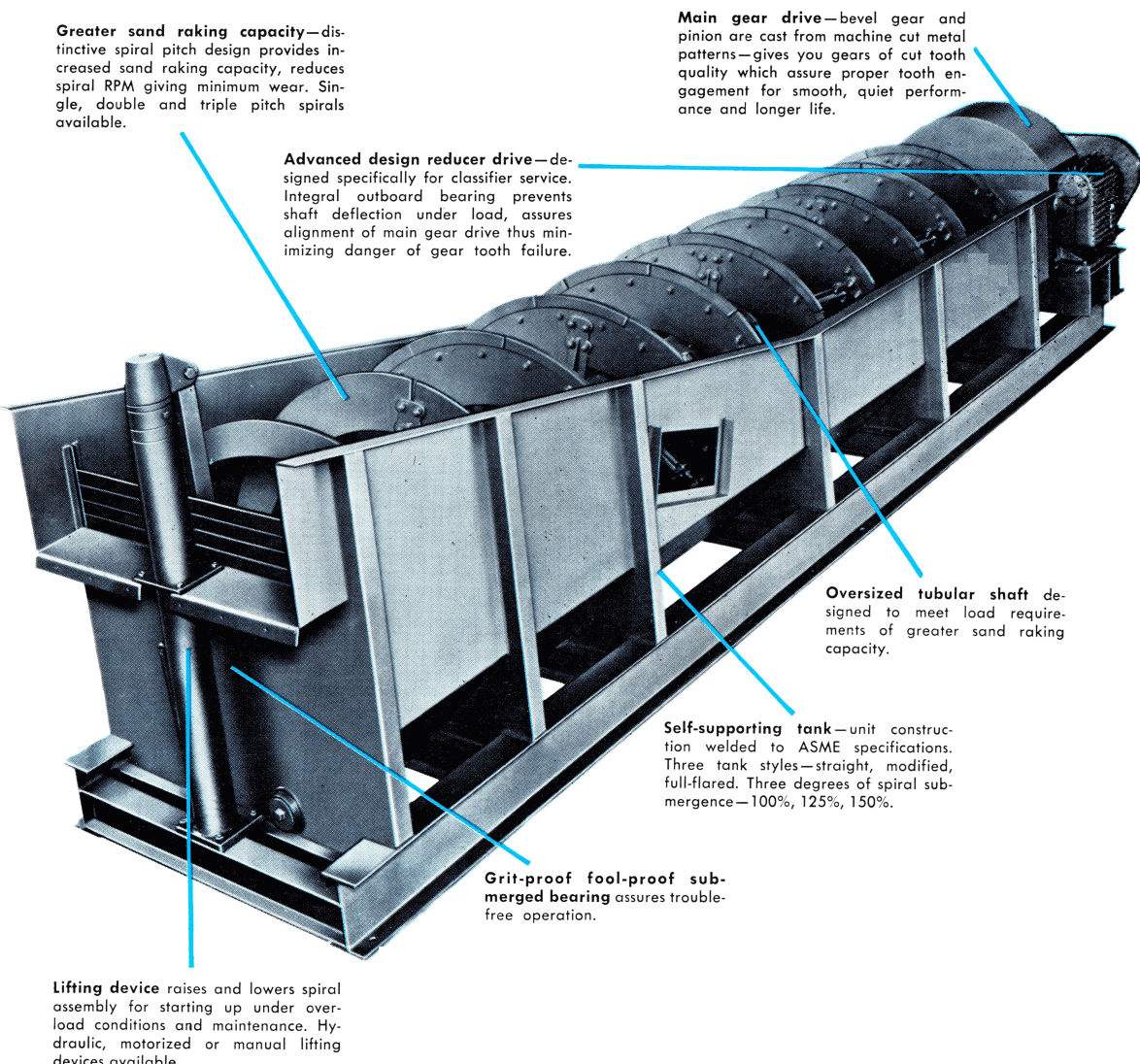
In Mineral Processing, the SPIRAL Classifier on the other hand is rotated through the ore. It doesn’t lift out of the slurry but is revolved through it. The direction of rotation causes the slurry to be pulled up the inclined bed of the classifier in much the same manner as the rakes do. As it is revolved in the slurry the spiral is constantly moving the coarse backwards the fine material will flow over the top and be travelling fast enough to be able to work its way downwards to escape.
The Variables of these two types of classifiers are The ANGLE of the inclined bed, this is normally a fixed angle the operator will not be able to adjust it.
The SPEED of the rakes or spirals, the DENSITY of the slurry, the TONNAGE throughput and finally the SETTLING RATE of the ore itself. To be effective all of these variables must be balanced. If the incline is too steep the flow of slurry will be too fast for the rakes or spirals to separate the ore. If the angle is too flat the settling rate will be too high and the classifier will over load. The discharge rate will be lower than the feed rate, in this case.  The load on the rakes will continue to build until the weight is greater than the rake or spiral mechanism is able to move. This will cause the classifier to stop and is known as being SANDED UP. If the speed of the rakes or spirals are too fast, too much will be pulled, out the top. This will increase the feed to the mill and result in an overload in either the mill or classifier as the circuit tries to process the increased CIRCULATING LOAD.
The load on the rakes will continue to build until the weight is greater than the rake or spiral mechanism is able to move. This will cause the classifier to stop and is known as being SANDED UP. If the speed of the rakes or spirals are too fast, too much will be pulled, out the top. This will increase the feed to the mill and result in an overload in either the mill or classifier as the circuit tries to process the increased CIRCULATING LOAD.
The DENSITY of the slurry is very important, too high the settling will be hampered by too many solids. Each particle will support each other preventing the heavier material from quickly reaching the “bottom of the slurry. This will not allow a separation to take place quickly. The speed at which the slurry will be travelling will be slow and that will hamper effective classification. Another variable is the TONNAGE. All equipment has a limit on the throughput that anyone is able to process, classifiers are no different. This and the other factors will have to be adjusted to compensate for the last variable, the ore itself. Every ore type has a different rate of settling. To be effective each of the previous variables will have to be adjusted to conform to each one’s settling characteristics.
The design of these classifiers (rake, spiral, screw) have inherent problems, First, they are very susceptible to wear, caused by the scrubbing action of the ore, that plus all of the mechanical moving parts create many worn areas to contend with. The other problem that these classifiers have is that they are easily overloaded. An overloaded classifier can quickly deteriorate into a sanded-up classifier. Once that happens the results are lost operating time, spillage and a period of poor Mineral Processing and Separation performance.

Spiral classifier
Another mechanical classifier is the spiral classifier. The spiral classifier such as the Akins classifier consists of a semi-cylindrical trough (a trough that is semicircular in cross-section) inclined to the horizontal. The trough is provided with a slow-rotating spiral conveyor and a liquid overflow at the lower end. The spiral conveyor moves the solids which settle to the bottom upward toward the top of the trough.
The slurry is fed continuously near the middle of the trough. The slurry feed rate is so adjusted that fines do not have time to settle and are carried out with the overflow .liquid. Heavy particles have time to settle, they settle to the bottom of the trough and the spiral conveyor moves the settled solids upward along the floor of the trough toward the top of the trough/the sand product discharge chute.

Rake and spiral classifiers are used for close-circuit grinding.


